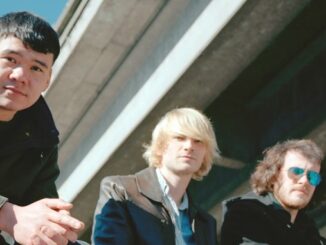The Museum of Anthropology’s (MOA) newest exhibit, Xicanx: Dreamers + Changemakers / Soñadores + creadores del cambio is now open until January 1, 2023. We had the opportunity to tour the exhibit with co-curators Jill Baird (Curator of Education at MOA) and Greta de León (Executive Director of The Americas Research Network), take a look!
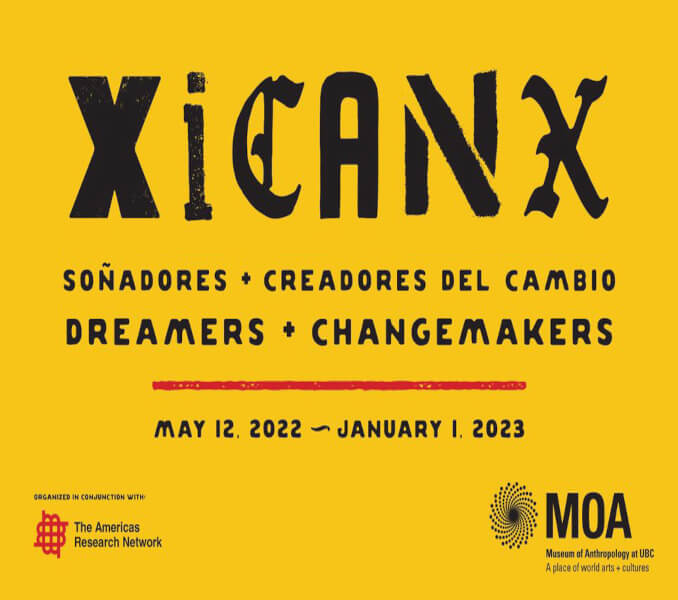
Xicanx, pronounced ‘Chi-can-x’, is the gender-neutral version of Chicano/Chicana. The term originates from the civil rights Chicano Movement (El Movimiento) of the 1960s that centred around Mexican-American social justice.
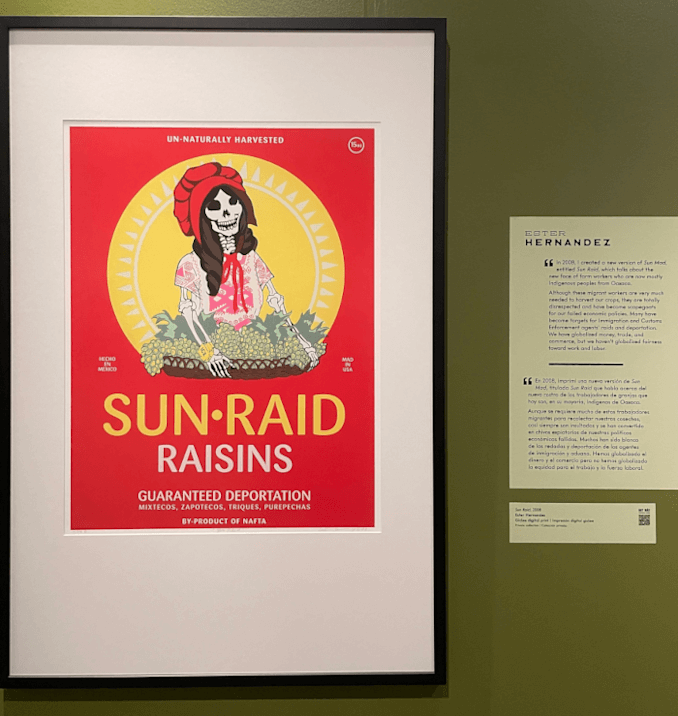
Today, as de León explained during the tour, Xicanx is a chosen identity that maintains its activist roots and cultural pride while speaking to contemporary issues of colonialism, race, and social difference.
The exhibit, which is entirely bilingual in English and Spanish, features multimedia works from 33 Xicanx artists from across the United States, many for the first time in Canada. Drawing on their immigrant, queer, indigenous, non-binary, and other marginalized backgrounds, the artists capture the diversity inherent to the Xicanx movement.

Right from the beginning, the Xicanx exhibit stands out from the rest of MOA, and not only because of the “MAKE TACOS NOT WAR” neon sign at its entrance.
Stepping into the exhibit feels like you’ve been transported to the streets of Mexico City, with the brightly coloured walls and hanging pabel picardos (see below) contrasting against the otherwise muted museum. Baird and de León explained that this is intentional, with every part of the exhibit working to represent the equally vibrant Xicanx movement and culture.
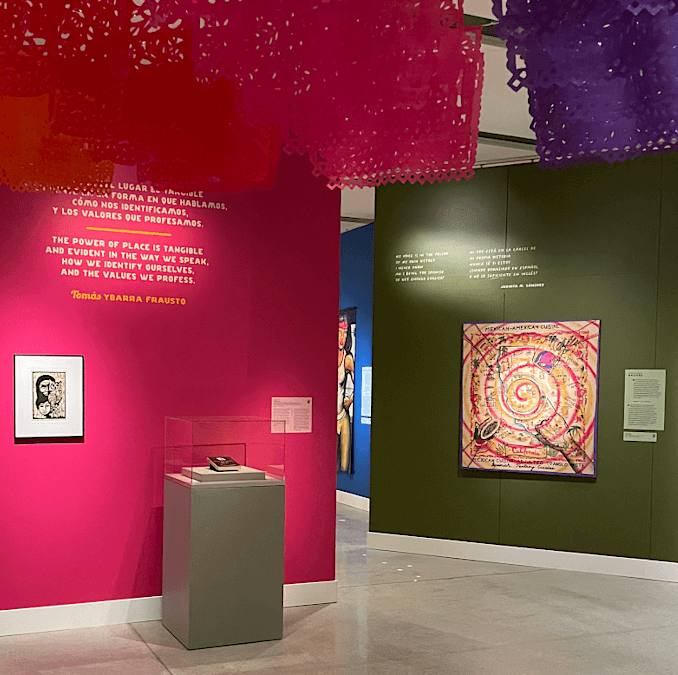
The exhibit is organized into five sections: neighbourhood, identity, home, borderlands, and activism. Each installation comes with its own unique QR code that visitors can scan to learn more about the piece and artist, including their favourite movies, songs, food, and more. Baird and de León said that this was their way of connecting the audience with both the artists themselves as well as the Xicanx movement. Not only did I think this was really unique, but I also have a few new recipes and movies to try, too!
Visitors enter with the ‘neighbourhood’ theme, whose centrepiece is a gallery of 40 murals from cities across the United States that are projected onto a large concrete wall, emphasizing the medium’s street origins.
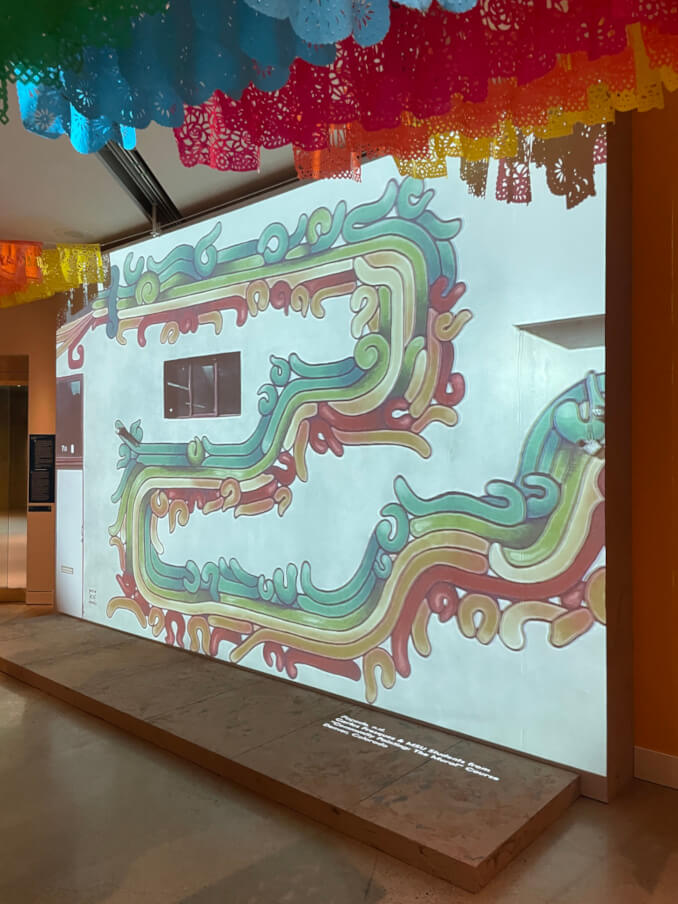
Baird explained how “muralism is a huge part of the Chicano movement and continues to be a way that communities advocate for themselves [and] represent their own histories, but also put their own experiences out in public spaces”.
As we moved to the ‘identity’ section, one installation caught my eye in particular. Titled Embroidered Tears by Sarah Castillo, it is her reflections on her mental health and journey to embracing and forgiving herself embroidered onto a red dress.
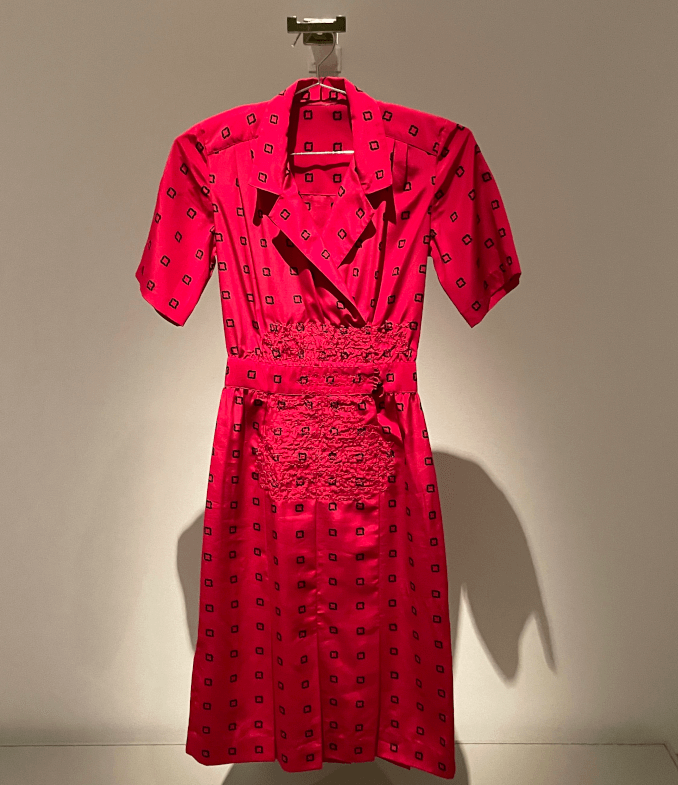
With the National Day of Awareness for Missing and Murdered Indigenous Women, Girls, and Two-Spirit People last week on May 5th, the red dress is undoubtedly striking to Canadians. De León later explained in an interview that while Castillo’s piece is not directly related to the MMIWG2S movement, it speaks to similar themes and experiences of (indigenous) women under colonialism that transcends borders.
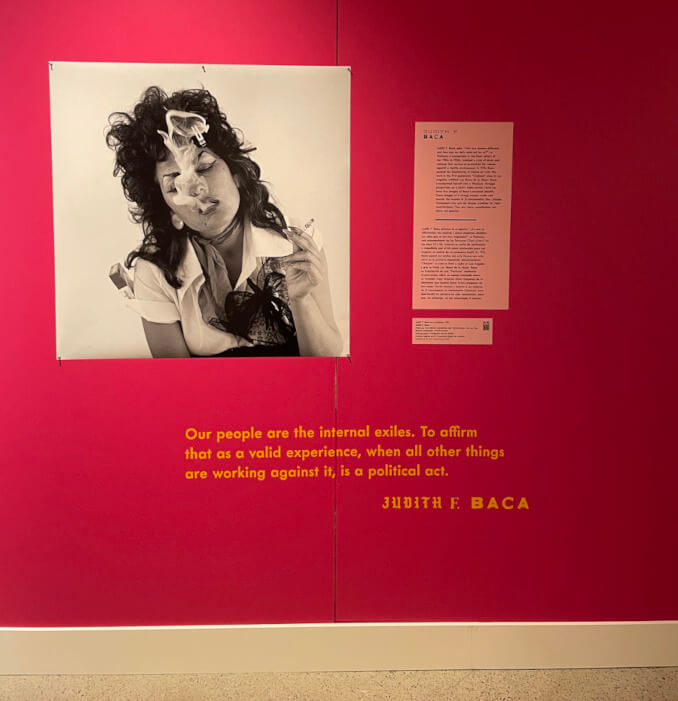
While any trip to the Museum of Anthropology is worthwhile, the newly opened Xicanx exhibit makes it a must-see for Vancouverites and tourists alike. Even if you’re unfamiliar with the Chicano Movement or Mexican-American culture and history, the overarching themes of social justice, indigenous activism, and decolonization will nonetheless resonate with visitors today—all you need is an open mind, says de León.
The Xicanx: Dreamers + Changemakers/Soñadores + creadores del cambio exhibit is now open at the Museum of Anthropology at the University of British Columbia and runs until January 1, 2023.

